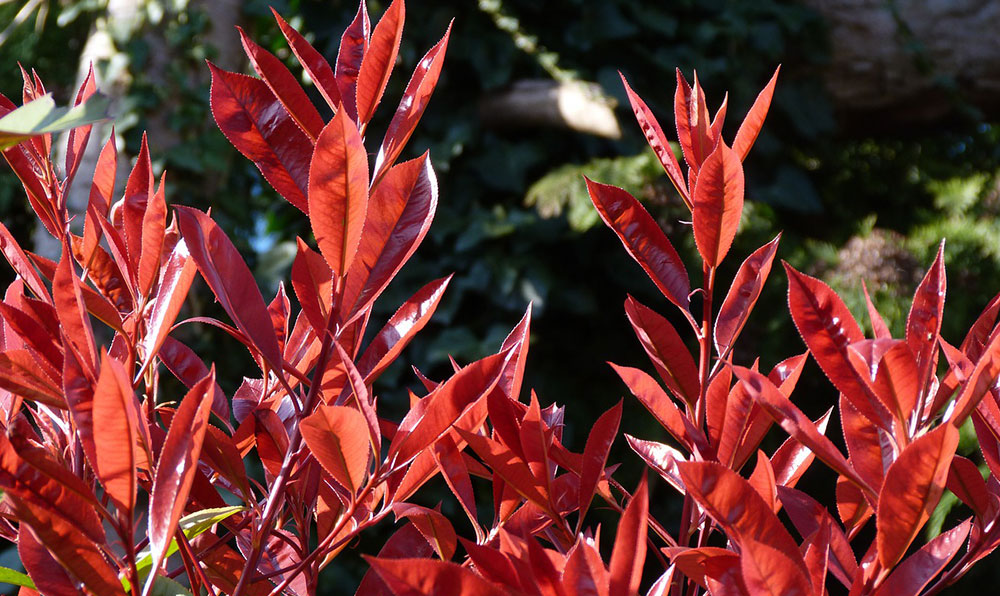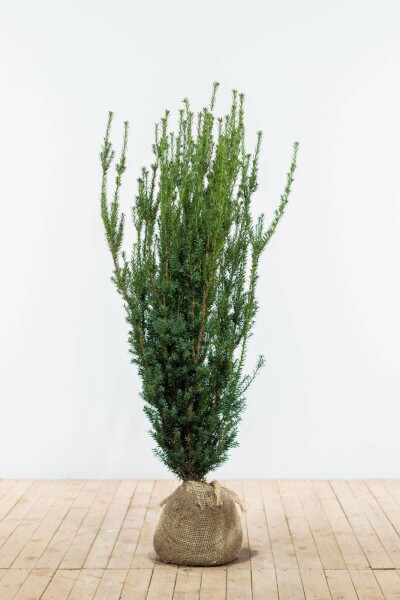Best Hedging Plants For Fall Foliage
Best Hedging Plants For Fall Foliage
Blog Article
Best Hedging Plants For Garden Rooms
Boost your garden's attraction with lavish hedge varieties such as Yew (Taxus), Thuja, Laurel, Photinia, and Bamboo, commemorated for their structural integrity and ecological benefits.
Yew and Thuja supply evergreen protection and winter season resilience, while Laurel uses rapid development and broad, fragrant leaves.
Photinia adds seasonal beauty with its vibrant red foliage, and Bamboo lends a low-maintenance, tranquil atmosphere.
These hedges improve air quality, lower noise, and produce tranquil, personal areas.
Proper planting, spacing, and upkeep guarantee vigorous growth and ecological consistency.
Explore how these lavish varieties can raise your garden's appeal and well-being.
Secret Takeaways
Change Your Garden With Lush Hedge Varieties
- Select Yew for its thick, evergreen development and unrivaled durability.
- Opt for Laurel for its fast growth and broad leaves, making sure fast privacy.
- Select Photinia for its lively seasonal foliage, which turns a striking dark red.
- Use Bamboo for a low-maintenance, winter-hardy hedge with visual appeal.
- Area plants 2-3 per meter and prune regularly for optimal growth and health.
Popular Hedge Plants
When changing a garden with lavish hedge ranges, it's important to consider popular hedge plants such as Yew, Thuja, Laurel, and Photinia due to their distinct attributes and advantages.
Yew (Taxus) is extremely respected for its durability and thick, green development, making it a prime option for withstanding landscapes.
Thuja is noted for its evergreen foliage and robust winter resilience.
Photinia includes seasonal vibrancy with red leaves that darken with time, developing vibrant visual appeal.
Laurel provides fast growth and fragrant, broad leaves, ideal for fast personal privacy.
Additionally, Bamboo is an excellent choice for atmosphere, offering a low-maintenance, winter-hardy alternative that boosts the garden's visual with its stylish, swaying canes.
These selections deal with a range of horticultural needs and choices.
Advantages of Garden Hedges
Garden hedges provide a wide range of benefits, making them a valuable addition to any landscape. These natural barriers are affordable to implement and provide significant wind defense, improving air circulation and adding to sound reduction. The thick foliage of hedges like Thuja and Beech guarantees personal privacy by blocking visibility, developing a remote and serene environment.
Hedges likewise play an important role in microclimate guideline, providing a steady environment that fosters plant development and lessens temperature changes. Their intricate leaf structures filter contaminants, improving air quality and adding to a much healthier garden environment.
Furthermore, hedges master noise decrease, taking in and deflecting acoustic waves to lower ambient noise levels. This double performance of providing both acoustic and visual privacy boosts the overall harmony and aesthetic appeal of any garden.
Planting and Maintenance Tips
For an effective hedge, meticulous preparation of the planting area is vital. Ensure the soil has correct pH and drainage to support strong root development.
Space the plants properly for the selected species. Water the hedge regularly during its preliminary development phase, adjusting as required with seasonal modifications.
Implement a methodical bug control and disease prevention technique, utilizing natural or chemical treatments when needed. Frequently inspect for aphids, mites, and fungal infections.
Apply mulch to retain wetness and suppress weeds. Seasonal pruning promotes dense growth and air flow, necessary for plant health.
Following these guidelines will help you cultivate a dynamic, well-maintained hedge that improves the charm of your garden.
Spacing and Cutting Standards
Spacing and Cutting Standards
Correct spacing and cutting are vital for cultivating healthy, aesthetically appealing hedges. Appropriate spacing makes sure each plant gets adequate nutrients, light, and air flow.
Follow these standards for ideal hedge upkeep:
- Spacing: Position hedge plants 2-3 plants per meter to motivate robust growth.
- Pruning Methods: Regular pruning is important for maintaining desired hedge height and shape. Trim new growth in summer and cut down older wood throughout winter season.
- Seasonal Care: Adjust trimming methods and schedules according to seasonal requirements to make sure plant health.
- Hedge Height: Frequently screen and trim to maintain the desired hedge height and attain consistent aesthetic appeals.
Complying with these actions will ensure your hedge thrives, boosting both the appeal and performance of your garden.
Selecting the Right Hedge
Choosing the Right Hedge
Picking the suitable hedge involves examining elements such as mature height, foliage density, and ecological durability. Successful hedge plant choice requires comprehending each types' growth attributes and site-specific versatility.
For example, Yew (Taxus) uses excellent durability and thick growth, while Thuja is noteworthy for its winter durability. Additionally, thinking about maintenance requirements is vital; fast-growing species like Laurel or Privet need regular cutting, whereas low-maintenance options like Bamboo or Ivy might be preferable for those seeking minimal upkeep.
Ecological elements such as soil type, light availability, and wetness conditions should likewise assist the choice process. This cautious approach makes sure the selected hedges will flourish, supplying both aesthetic and practical benefits to the garden landscape.
Shipment and Planting Recommendations
To ensure your hedge plants thrive, they must be delivered by specialized carriers and planted immediately upon arrival.
Follow these essential steps for successful planting:
- Soil Preparation: Improve the soil with organic matter to improve drainage and nutrient material.
- Planting Depth: Develop a trench twice the width and equivalent to the depth of the root ball.
- Watering Techniques: Water thoroughly after planting, keeping the soil regularly wet but not filled.
- Mulching: Apply a layer of mulch to retain wetness and reduce weeds.
Customer Support and Service
Provided the important function of prompt help in horticultural pursuits, our consumer assistance group is available six days a week through telephone, email, and social media to provide professional recommendations and promptly resolve any concerns. Their dedication to quick response times ensures customer satisfaction by solving queries associated with plant health, ideal planting techniques, and maintenance schedules.

Reaction Time
-----------------
Telephone
Six days a week
Within 24 hours
This detailed assistance system, reinforced by a stellar 9.3/ 10 client score, highlights our dedication to boosting the gardening experience for every single customer.
Regularly Asked Concerns
The Length Of Time Does It Consider Hedge Plants to Develop?
Hedge plants usually need one to 3 years to end up being completely developed, with the specific period differing by species and growing conditions.
Efficient care during this crucial period is important for robust growth. Consistent watering, alert weed control, and proper fertilizer application are essential in promoting strong root advancement.
For instance, fast-growing species like Laurel may establish more quickly, while slower-growing varieties such as Yew might take longer. Thorough upkeep accelerates the establishment process, leading to thick and healthy hedges.
What Are the very best Hedge Plants for Personal Privacy?
The concern of the finest hedge plants for privacy includes examining evergreen and deciduous choices.
Evergreen hedges like Thuja, Laurel, and Cypress provide year-round protection, making sure continuous privacy.
On the other hand, deciduous hedges such as Beech provide seasonal privacy, shedding leaves in cooler months.
Secret maintenance tips for personal privacy hedges include regular cutting, fertilizing in spring, and appropriate spacing-- typically 2 to 3 plants per meter.
In addition, consistent watering and thorough weed elimination are crucial for promoting healthy, thick development.
Can Hedge Plants Attract Wildlife to My Garden?
Yes, hedge plants can bring in wildlife to your garden by offering important benefits like shelter, food, and nesting websites, consequently enhancing regional biodiversity. Yew, holly, and laurel are outstanding for attracting birds, while ivy supports a range of pests.
However, it is essential to note that there are some downsides, such as increased maintenance to handle pests and routine maintenance. Carefully choosing and preserving hedge ranges can assist stabilize these drawbacks and advantages, ultimately fostering a lively and sustainable community in your garden.
Exist Any Blooming Hedge Plants Available?
Yes, there are flowering hedge plants offered that can improve the appeal of your garden.
For example, Elaeagnus, also understood as hedge plants Olive Willow, produces fragrant white flowers in the fall, adding a touch of sophistication.
Photinia, another popular option, showcases vibrant red leaves that develop into an abundant green, creating a dynamic visual impact throughout the seasons.
To make sure these plants thrive, it's important to practice correct pruning strategies and seasonal upkeep, such as trimming new development in the summer season and cutting down in the winter season.
These measures will help maintain the health and aesthetic appeal of your flowering hedges.
How Do I Prevent Pests in My Hedge Plants?
To prevent insects in hedge plants, utilize natural insect control approaches and keep correct hedge care. Present useful pests like ladybugs, which victimize damaging bugs, to develop a well balanced environment.
Frequently check your hedges for indications of problem and immediately get rid of any afflicted parts to avoid the spread. Ensure the health of your hedges by applying balanced fertilizers and providing adequate water.
Make use of mulching to maintain soil wetness and appropriate spacing to minimize plant stress and promote robust growth. These practices jointly assist in lessening pest problems and preserving a healthy hedge.
Conclusion
In essence, choosing the right hedge ranges such as Yew, Thuja, and Laurel can transform any garden into a serene sanctuary. These plants provide year-round plant, boost visual appeal, and offer practical benefits like noise reduction and wind security.
Correct planting strategies, precise spacing, consistent watering, and seasonal trimming are essential for optimum development.
Reputable shipment services and expert client assistance ensure a seamless experience from purchase to planting, making it easier than ever to raise your outdoor space.
Garden hedges provide a multitude of benefits, making them an important addition to any landscape. These natural barriers are affordable to execute and supply significant wind security, improving air blood circulation and contributing to noise reduction. The dense foliage of hedges like Thuja and Beech guarantees personal privacy by blocking presence, creating a remote and tranquil environment.

Pruning Techniques: Routine pruning is vital for preserving desired hedge height and shape. Cut new development in summertime and cut back older wood during winter season.
Report this page